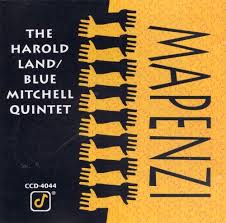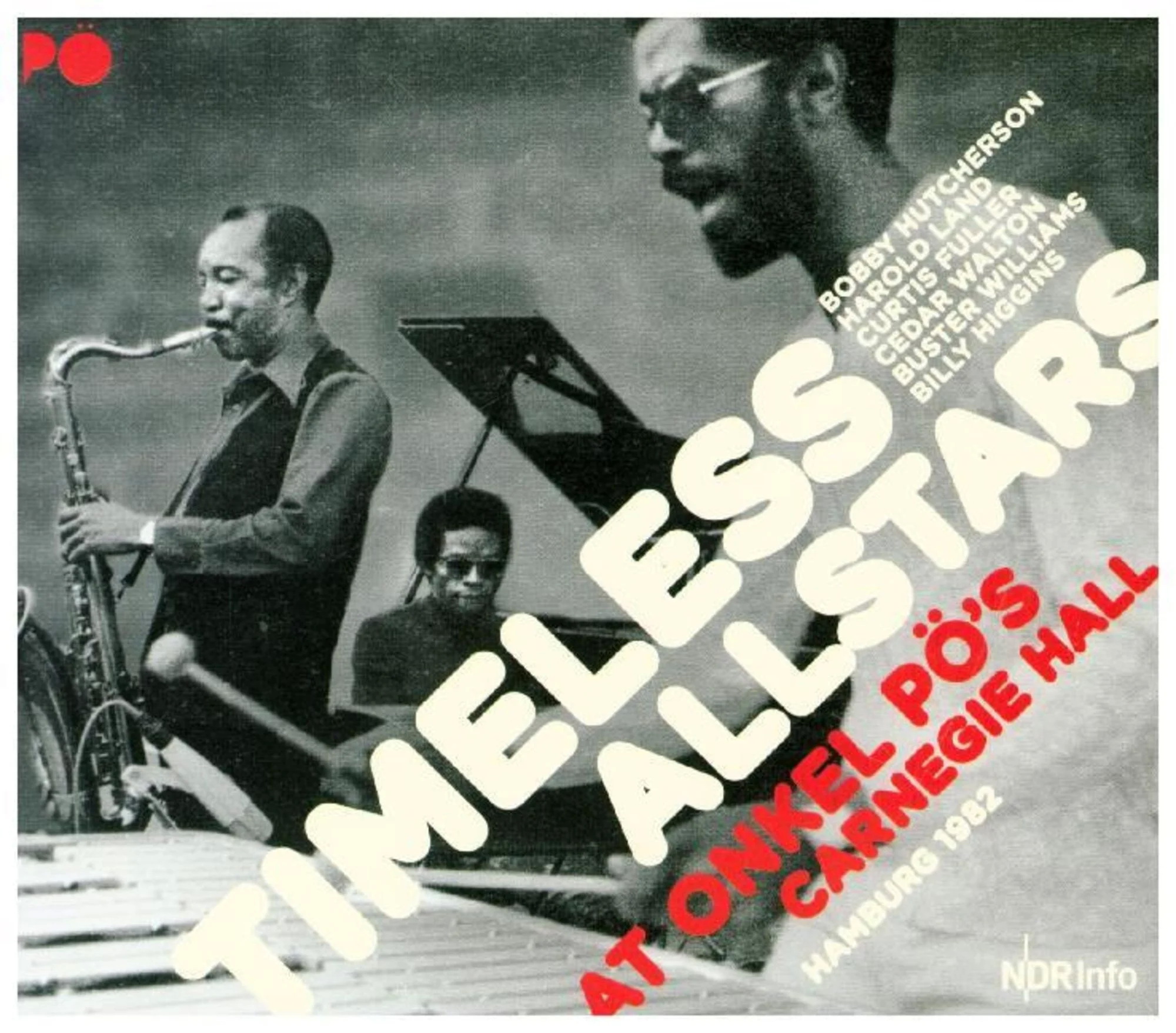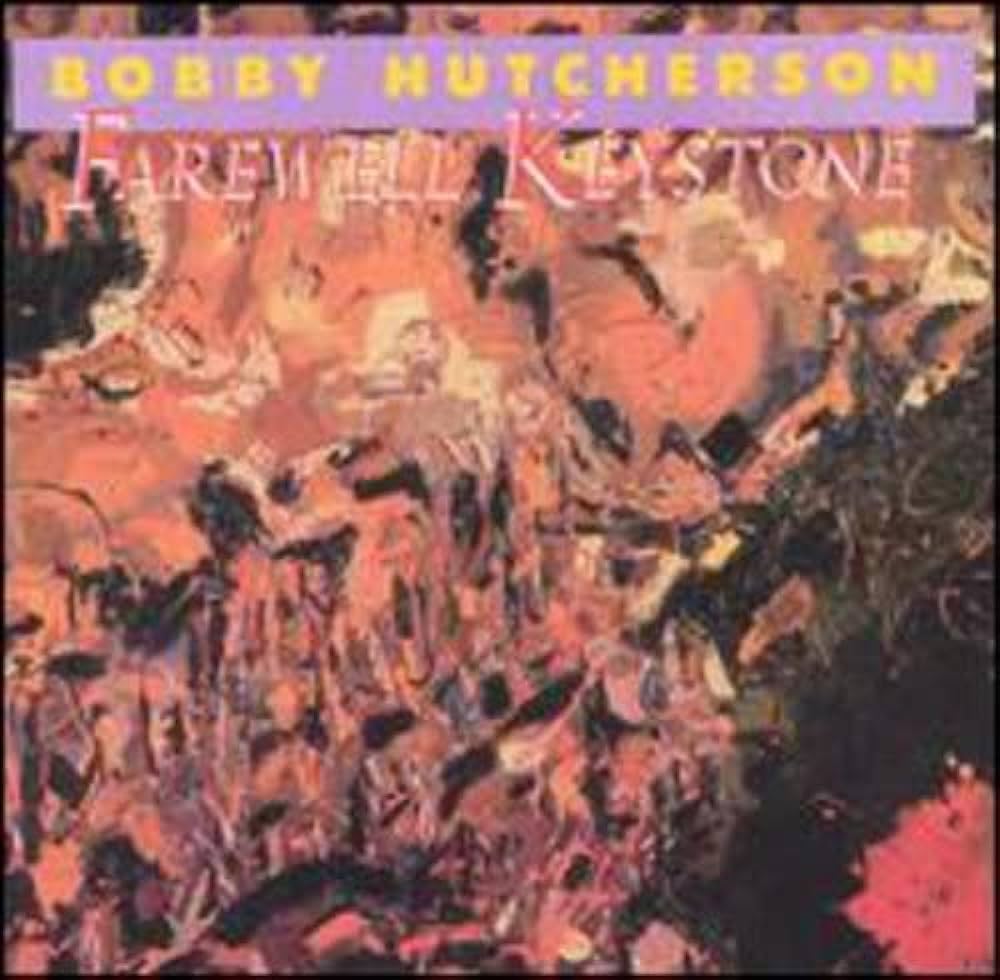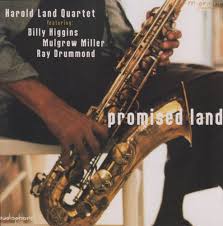Mapenzi – Harold Land
One of Harold Land's most important, intriguing and challenging masterpieces. The four recordings, all with Harold playing, show slightly different approaches to this song's irregular form. Also check out our rhythm section set up edition, showing how the rhythm section on each recording plays the eight measures before the melody to set up the tempo after the rubato intro.
- Recording: Harold Land - Mapenzi
- Recorded on: April 14, 1977
- Label: Concord (CJ 44)
- Concert Key: No key center
- Vocal Range: , to
- Style: Swing (uptempo)
- Trumpet - Blue Mitchell
- Tenor Sax - Harold Land
- Piano - Kirk Lightsey
- Bass - Reggie Johnson
- Drums - Albert "Tootie" Heath
Video
- Description
- Historical Notes
- Solos
- Piano Corner
- Bass Corner
- Drum Corner
- Guitar Corner
- Inside & Beyond
- Minus You
There is an intro that begins rubato, based on the first four chords of the head. It's played twice, featuring a different soloist each time; on this recording Harold Land begins, and trumpeter Blue Mitchell plays on the repeat. Each soloist begins with the first five notes of the melody, with the fifth cueing the second chord, and fills in on each chord after that. The third and fourth chords are cued with the equivalent melody note from the head. The tempo is then established with an eight-measure rhythm section vamp going into the head; this is where our audio excerpts start for all four recordings. A "rhythm section set up" edition is available showing how the rhythm sections on the four Harold Land recordings play this set up. Click on Inside and Beyond for more details.
In all versions, the head is played twice in and once out; the coda holds out the first chord of the head (Em7), over which the first melody phrase is again played rubato (with each note directed) and ending on the second chord of the head (E♭maj7♯5).
On this recording, the horns are harmonized in fourths on the B section and first three measures of C; they are in octaves elsewhere. The last note of the coda is harmonized as a 6th. This is the quintet arrangement for which we have a condensed score and 2nd horn parts.
We have a piano part which comes from Harold's original manuscript. It includes the melody in the right hand for the A section, with two-handed voicings at B and C. On the Timeless All-Stars recording (click on the second album cover), Cedar Walton plays the piano part as written, doubling the melody with the horns at A. Bassists and drummers can read either the C lead sheet or Concert Condensed Score.
The first three recordings of Mapenzi begin with a rubato section: Harold Land plays the first melody phrase and improvises over three more held-out chords, and another soloist does the same. Then the rhythm section takes over for eight measures—setting the tempo. As heard in the first recording, the piano has the responsibility of establishing and cementing the new tempo. In some of the other recordings the drums also set it up. Our audio excerpts for each recording start with these eight measures. The whole-tone scale used for this set up comes from the last two measures of the melody, which is over F7♭5. Our lead sheets and parts indicate "F whole tone" here, though on these recordings the bass pedals on different notes from the same scale: B or G (except for the first recording where the bass plays E).
CLIP Rhythm Section uptempo set up edition: This separate sheet shows the eight measures before the head as played in each of the four recordings. These single staff transcriptions include the piano melody with bass, drums, and/or piano left-hand rhythms below the staff. The piano melody on the set ups is similar on the four recordings but each one is slightly different.
Harold Land/Blue Mitchell - Mapenzi: pianist Kirk Lightsey really sets the tempo by himself. He plays mostly half notes at the beginning; other pianists accent the "and" of beat 2 in the second measure. Drummer Tootie Heath comes in gradually, first with light cymbals and hi-hat and starting time at the fifth measure. Bassist Reggie Johnson starts in the third measure with double whole notes on low E.
Timeless All-Stars - At Onkel Po's Carnegie Hall, Hamburg 1982: in this version, drummer Billy Higgins sets up tempo with two measures of time (not shown) before the piano and bass come in. Pianist Cedar Walton comes in right on the downbeat, and bassist Buster Williams pedals B on beats 2 and 4. On this and the next recording, the rhythm section plays the set up again to go to the out melody after the drum solo.
Bobby Hutcherson - Farewell Keystone: Billy Higgins starts on the downbeat and Cedar Walton comes in on beat 3. There is no bass in this setup; Cedar pedals B in the left hand on 2 and 4, starting on beat 4 of the second measure. His phrasing is different from the Timeless All-Stars version: the "and" of 2 in the second measure is tied over here, rather than short as in the earlier recording.
Harold Land - Promised Land: there is no rubato section at the beginning here. The rhythm section starts right on it with the set up, all together. Bassist Ray Drummond pedals on G, with a rhythm that goes with the piano melody. Mulgrew Miller plays this melody in three-note triad voicings, rather than two notes in thirds as Kirk Lightsey and Cedar Walton do. Mulgrew's phrasing is similar to Cedar's in the Timeless All-Stars version.
Related Songs
Email Send Mapenzi to a friend
- Recording: Timeless All Stars - At Onkel Po's Carnegie Hall
- Recorded on: April 5, 1982
- Label: WDR/Jazzline (N77063)
- Concert Key: No key center
- Vocal Range: , to
- Style: Swing (uptempo)
- Trombone - Curtis Fuller
- Tenor Sax - Harold Land
- Vibes - Bobby Hutcherson
- Piano - Cedar Walton
- Bass - Buster Williams
- Drums - Billy Higgins
Video
- Description
- Historical Notes
- Solos
- Piano Corner
- Bass Corner
- Drum Corner
- Guitar Corner
- Inside & Beyond
- Minus You
Cedar Walton, Buster Williams, and Billy Higgins do an excellent job of making the irregular form very clear in the solos. At this fast tempo, the odd phrase lengths can be very challenging for a soloist. Cedar and Billy often emphasize whole notes or half notes in the descending sequences of the form: the last four measures of the A section, and the C section. In particular, they typically play quarter notes in the last measure of the form. Bobby Hutcherson frequently plays a simple variation of the melody on the fourth and fifth measures of the solo chorus, sometimes joined by Cedar.
This recording has an unusual structure of trading with the drums. The first soloist plays the A section, drums take B, and then the next soloist starts at C and continues through the A section of the next chorus. On the last trading chorus, Billy Higgins completes the chorus and then continues soloing.
The first three recordings of Mapenzi begin with a rubato section: Harold Land plays the first melody phrase and improvises over three more held-out chords, and another soloist does the same. Then the rhythm section takes over for eight measures—setting the tempo. As heard in the first recording, the piano has the responsibility of establishing and cementing the new tempo. In some of the other recordings the drums also set it up. Our audio excerpts for each recording start with these eight measures. The whole-tone scale used for this set up comes from the last two measures of the melody, which is over F7?5. Our lead sheets and parts indicate "F whole tone" here, though on these recordings the bass pedals on different notes from the same scale: B or G (except for the first recording where the bass plays E).
CLIP Rhythm Section uptempo set up edition: This separate sheet shows the eight measures before the head as played in each of the four recordings. These single staff transcriptions include the piano melody with bass, drums, and/or piano left-hand rhythms below the staff. The piano melody on the set ups is similar on the four recordings but each one is slightly different.
Harold Land/Blue Mitchell - Mapenzi: pianist Kirk Lightsey really sets the tempo by himself. He plays mostly half notes at the beginning; other pianists accent the "and" of beat 2 in the second measure. Drummer Tootie Heath comes in gradually, first with light cymbals and hi-hat and starting time at the fifth measure. Bassist Reggie Johnson starts in the third measure with double whole notes on low E.
Timeless All-Stars - At Onkel Po's Carnegie Hall, Hamburg 1982: in this version, drummer Billy Higgins sets up tempo with two measures of time (not shown) before the piano and bass come in. Pianist Cedar Walton comes in right on the downbeat, and bassist Buster Williams pedals B on beats 2 and 4. On this and the next recording, the rhythm section plays the set up again to go to the out melody after the drum solo.
Bobby Hutcherson - Farewell Keystone: Billy Higgins starts on the downbeat and Cedar Walton comes in on beat 3. There is no bass in this setup; Cedar pedals B in the left hand on 2 and 4, starting on beat 4 of the second measure. His phrasing is different from the Timeless All-Stars version: the "and" of 2 in the second measure is tied over here, rather than short as in the earlier recording.
Harold Land - Promised Land: there is no rubato section at the beginning here. The rhythm section starts right on it with the set up, all together. Bassist Ray Drummond pedals on G, with a rhythm that goes with the piano melody. Mulgrew Miller plays this melody in three-note triad voicings, rather than two notes in thirds as Kirk Lightsey and Cedar Walton do. Mulgrew's phrasing is similar to Cedar's in the Timeless All-Stars version
Related Songs
Email Send Mapenzi to a friend
- Recording: Bobby Hutcherson - Farewell Keystone
- Recorded on: July 10-11, 1982
- Label: Theresa (TR 124)
- Concert Key: No key center
- Vocal Range: , to
- Style: Swing (uptempo)
- Trumpet - Oscar Brashear
- Tenor Sax - Harold Land
- Vibes - Bobby Hutcherson
- Piano - Cedar Walton
- Bass - Buster Williams
- Drums - Billy Higgins
Video
- Description
- Historical Notes
- Solos
- Piano Corner
- Bass Corner
- Drum Corner
- Guitar Corner
- Inside & Beyond
- Minus You
The rhythm section again makes the solo form very obvious, but there are no horn backgrounds. The trading has the same format as the Timeless All-Stars recording, but gets a little confused: Harold doesn't come in on the C section of the first chorus (the rhythm section starts comping here), and enters at the beginning of the next chorus. Billy takes both the B and C sections of Harold's chorus, but sets up the following chorus very well for trumpeter Oscar Brashear to come in at the top.
The first three recordings of Mapenzi begin with a rubato section: Harold Land plays the first melody phrase and improvises over three more held-out chords, and another soloist does the same. Then the rhythm section takes over for eight measures—setting the tempo. As heard in the first recording, the piano has the responsibility of establishing and cementing the new tempo. In some of the other recordings the drums also set it up. Our audio excerpts for each recording start with these eight measures. The whole-tone scale used for this set up comes from the last two measures of the melody, which is over F7?5. Our lead sheets and parts indicate "F whole tone" here, though on these recordings the bass pedals on different notes from the same scale: B or G (except for the first recording where the bass plays E).
CLIP Rhythm Section uptempo set up edition: This separate sheet shows the eight measures before the head as played in each of the four recordings. These single staff transcriptions include the piano melody with bass, drums, and/or piano left-hand rhythms below the staff. The piano melody on the set ups is similar on the four recordings but each one is slightly different.
Harold Land/Blue Mitchell - Mapenzi: pianist Kirk Lightsey really sets the tempo by himself. He plays mostly half notes at the beginning; other pianists accent the "and" of beat 2 in the second measure. Drummer Tootie Heath comes in gradually, first with light cymbals and hi-hat and starting time at the fifth measure. Bassist Reggie Johnson starts in the third measure with double whole notes on low E.
Timeless All-Stars - At Onkel Po's Carnegie Hall, Hamburg 1982: in this version, drummer Billy Higgins sets up tempo with two measures of time (not shown) before the piano and bass come in. Pianist Cedar Walton comes in right on the downbeat, and bassist Buster Williams pedals B on beats 2 and 4. On this and the next recording, the rhythm section plays the set up again to go to the out melody after the drum solo.
Bobby Hutcherson - Farewell Keystone: Billy Higgins starts on the downbeat and Cedar Walton comes in on beat 3. There is no bass in this setup; Cedar pedals B in the left hand on 2 and 4, starting on beat 4 of the second measure. His phrasing is different from the Timeless All-Stars version: the "and" of 2 in the second measure is tied over here, rather than short as in the earlier recording.
Harold Land - Promised Land: there is no rubato section at the beginning here. The rhythm section starts right on it with the set up, all together. Bassist Ray Drummond pedals on G, with a rhythm that goes with the piano melody. Mulgrew Miller plays this melody in three-note triad voicings, rather than two notes in thirds as Kirk Lightsey and Cedar Walton do. Mulgrew's phrasing is similar to Cedar's in the Timeless All-Stars version.
Related Songs
Email Send Mapenzi to a friend
- Recording: Harold Land - Promised Land
- Recorded on: August 6, 2000
- Label: Audiophoric (APCDJ2-0001)
- Concert Key: No key center
- Vocal Range: , to
- Style: Swing (uptempo)
- Tenor Sax - Harold Land
- Piano - Mulgrew Miller
- Bass - Ray Drummond
- Drums - Billy Higgins
Video
- Description
- Historical Notes
- Solos
- Piano Corner
- Bass Corner
- Drum Corner
- Guitar Corner
- Inside & Beyond
- Minus You
The first three recordings of Mapenzi begin with a rubato section: Harold Land plays the first melody phrase and improvises over three more held-out chords, and another soloist does the same. Then the rhythm section takes over for eight measures—setting the tempo. As heard in the first recording, the piano has the responsibility of establishing and cementing the new tempo. In some of the other recordings the drums also set it up. Our audio excerpts for each recording start with these eight measures. The whole-tone scale used for this set up comes from the last two measures of the melody, which is over F7?5. Our lead sheets and parts indicate "F whole tone" here, though on these recordings the bass pedals on different notes from the same scale: B or G (except for the first recording where the bass plays E).
CLIP Rhythm Section uptempo set up edition: This separate sheet shows the eight measures before the head as played in each of the four recordings. These single staff transcriptions include the piano melody with bass, drums, and/or piano left-hand rhythms below the staff. The piano melody on the set ups is similar on the four recordings but each one is slightly different.
Harold Land/Blue Mitchell - Mapenzi: pianist Kirk Lightsey really sets the tempo by himself. He plays mostly half notes at the beginning; other pianists accent the "and" of beat 2 in the second measure. Drummer Tootie Heath comes in gradually, first with light cymbals and hi-hat and starting time at the fifth measure. Bassist Reggie Johnson starts in the third measure with double whole notes on low E.
Timeless All-Stars - At Onkel Po's Carnegie Hall, Hamburg 1982: in this version, drummer Billy Higgins sets up tempo with two measures of time (not shown) before the piano and bass come in. Pianist Cedar Walton comes in right on the downbeat, and bassist Buster Williams pedals B on beats 2 and 4. On this and the next recording, the rhythm section plays the set up again to go to the out melody after the drum solo.
Bobby Hutcherson - Farewell Keystone: Billy Higgins starts on the downbeat and Cedar Walton comes in on beat 3. There is no bass in this setup; Cedar pedals B in the left hand on 2 and 4, starting on beat 4 of the second measure. His phrasing is different from the Timeless All-Stars version: the "and" of 2 in the second measure is tied over here, rather than short as in the earlier recording.
Harold Land - Promised Land: there is no rubato section at the beginning here. The rhythm section starts right on it with the set up, all together. Bassist Ray Drummond pedals on G, with a rhythm that goes with the piano melody. Mulgrew Miller plays this melody in three-note triad voicings, rather than two notes in thirds as Kirk Lightsey and Cedar Walton do. Mulgrew's phrasing is similar to Cedar's in the Timeless All-Stars version.
Related Songs
Email Send Mapenzi to a friend
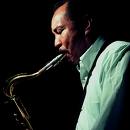
Harold Land
February 18, 1928 – July 27, 2001
Many people only know of Harold Land as the great tenor saxophone soloist who made the classic quintet recordings with the Clifford Brown - Max Roach Quintet: Joy Spring, Daahoud, The Blues Walk and other classics—many of which are available from jazzleadsheets.com. Harold is far more than just a great tenor saxophonist sideman. Read more...

